Civil Liberties, Criminalizing Dissent, Cuba, Guantanamo, Habeas Corpus, Human Rights, Iraq War, Political Prisoner, Prison Industry, Surveillance, Targeting Muslims, War Resister
Podcast: Play in new window | Download

Remembering Michael Ratner
Hosts Heidi Boghosian and Michael Smith remember Michael Ratner as cohost, activist, radical attorney, author and close friend. In this show, hosts reflect on Michael’s work and listen back to several monologue updates. They include his work as co-counsel for Wikileaks founder Julian Assange, the Dahiya Doctrine, SNAP- Survivors Network of those Abused by Priests, NSA survelliance in the Bahamas and Guantanamo Bay prisoner exchange.
Michael Ratner (1943-2016) was president emeritus of the Center for Constitutional Rights and author of Guantanamo: What the World Should Know. Michael worked for decades, as a crusader for human rights both at home and abroad litigating many cases against international human rights violators resulting in millions of dollars in judgments for abuse victims and expanding the possibilities of international law. He acted as a principal counsel in the successful suit to close the camp for HIV-positive Haitian refugees on Guantanamo Base, Cuba. Michael Ratner has litigated a dozen cases challenging a President’s authority to go to war, without congressional approval. In the wake of the September 11 attacks, the Center has focused its efforts on the constitutionality of indefinite detention and the restrictions on civil liberties as defined by the unfolding terms of a permanent war. Among his many honors were: Trial Lawyer of the Year from the Trial lawyers for Public Justice, The Columbia Law School Public Interest Law Foundation Award, and the North Star Community Frederick Douglass Award.
Civil Liberties, Criminalizing Dissent, Human Rights, Political Prisoner, War Resister
Podcast: Play in new window | Download

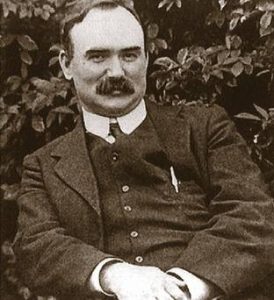
A Full Life: James Connolly, The Irish Rebel
Executed by a British firing squad on May 12, 1916 for his role in organizing the Easter Rising, James Connolly was one of the most prominent radical organizers and agitators of his day. Born in Scotland in 1868 to Irish immigrant parents Connolly spent most of adult life organizing for labor unions and Socialist organizations in Ireland, Scotland and the United States. Despite attending school for only a few years, Connolly became a leading Socialist writer and theoretician, founding and editing newspapers including The Socialist Scotland, The Harp in the United States, and the Worker’s Republic in Ireland. As a labor organizer, Connolly stressed the importance of direct action, broad working class unity and a commitment to ending labor’s exploitation. As a Socialist agitator, Connolly saw economic and political independence as inextricably intertwined. The pamphlet, A Full Life: James Connolly, The Irish Rebel is the first graphic treatment on Connolly’s life. Its been issued on the centenary of the Easter Rising.
Guest – Paul Buhle, formerly a senior lecturer at Brown University, produces radical comics. He founded the SDS Journal Radical America and the archive Oral History of the American Left and, with Mari Jo Buhle, is coeditor of the Encyclopedia of the American Left. He lives in Madison.
—-
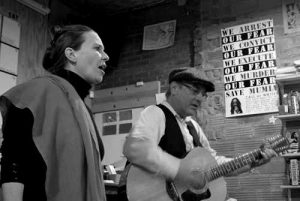
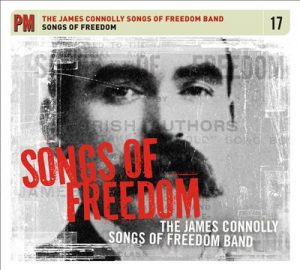
Songs of Freedom: The James Connolly Songs of Freedom Band
Songs of Freedom is the name of the songbook initially edited by James Connolly and reedited by Mat Calahan and republished by PM Press. Connolly’s introduction is better known than the collection for which it was written contained in his oft quoted maxim “Until the movement is marked the joyous defiant singing of revolutionary songs, it lacks one of the most distinctive marks of a popular revolutionary movement. It is the dogma of a few and not the faith of the multitude. Songs of Freedom is the celebration of the life and work of James Connolly, the Irish revolutionary Socialist martyred by the British government for his role in the Eastern Rising of 1916. Songs of Freedom the CD, makes contemporary music out of old revolutionary songs. The band turns the timeless lyrics of James Connolly into timeless manifestos of today.
Guest – Mat Calahan is a musician and author originally from San Francisco, where he founded Komotion International. He is the author of three books, Sex, Death & the Angry Young Man, Testimony, and The Trouble With Music. He currently resides in Bern, Switzerland. http://www.matcallahan.com
———————————————————-
Afghanistan War, CIA Sponsored Terror, Civil Liberties, Human Rights, Political Prisoner, Surveillance, Truth to Power
Podcast: Play in new window | Download
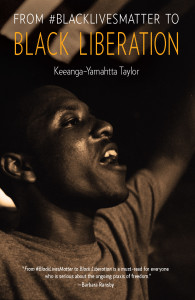
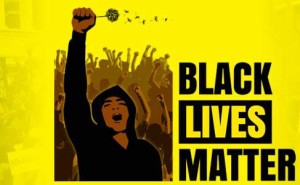
From #BlackLivesMatter to Black Liberation
Cornel West calls it the best analysis we have of the Black Lives Matter moment of the long struggle for freedom in America. Keeanga-Yamahtta Taylor’s new book, “From #BlackLivesMatter to Black Liberation,” explores how a new generation of Black radicals–in challenging abusive policing practices, over-imprisonment of Black persons, deeply ingrained stereotypes of African Americans as especially dangerous and devoid of humanity, along with other forms of racist state oppression–is carrying on the fight for Black liberation through renewed activist uprisings. Combining historical accounts with insightful analysis, she demonstrates the interconnection between institutional racism and class oppression, reminding us how inequality and racialized state violence are byproducts of capitalism.
Guest – Keeanga-Yamahtta Taylor is assistant professor in the department of African American Studies at Princeton University. She writes on Black politics, social movements and racial inequality in the United States.
—-
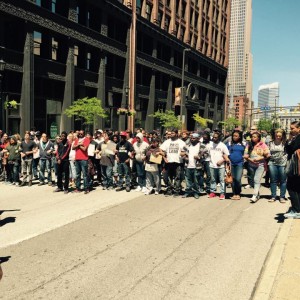

Black Movement-Law Project
Several attorneys and legal activists involved in Ferguson, Baltimore and Cleveland protests have formed the Black Movement-Law Project. The Project provides legal support to local communities across the nation as they take to the streets to protest police misconduct, and systemic racism.
Their approach to community activism is itself community based: they offer legal and technical assistance based on the premise that local mass movements frequently lack legal expertise. They help arrange rapid responses to support activists on the ground by providing legal observers, know your rights trainings, and jail support. Their national network of human and civil rights attorneys offer assistance to local communities in the form of legal representation and long-term impact litigation.
Guests -Black Movement-Law Project co-founder Abi Hassen. Abi Hassen is an attorney, consultant and cofounder of the Black Movement-Law Project. He was formerly the mass defense coordinator at the National Lawyers Guild. He has a J.D. from New York University School of Law, and an undergraduate degree in computer science from The Evergreen State College. With his extensive background in labor, political and community organizing, Abi has been active at the intersection of law, technology and organizing for social justice for over a decade.
Guest – Black Movement-Law Project co-founder Nathan (Nash) Sheard, is a legal activist and organizer with the BMLP.
————————————————————
Afghanistan War, CIA Sponsored Terror, Civil Liberties, Criminalizing Dissent, Human Rights, Political Prisoner, Surveillance, Torture, War Resister
Podcast: Play in new window | Download

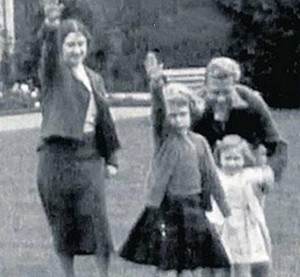
Seeds Of Fascism In The United States
There has been much discussion in liberal and left circles about whether Donald Trump is a fascist and whether the country is in danger of becoming fascist. It is pointed out the Trump is a demagogue, lies, is for violence, is a racist against Muslims and Mexicans, and is misogynist with respect to women. He is for bringing back torture and and increasing American aggression in Syria.
Guest – Professor Paul LeBlanc, a professor of history at the La Roche College in Pittsburgh and has written and participated in the US labor, radical, and civil rights movement. Professor LeBlanc is the author of books on the European revolutionaries Lenin, Trotsky, and Rosa Luxembourg. With respect to America, he wrote “a short history of the US working class.” And co-authored with economist Michael Yates the highly acclaimed “freedom budget for all Americans: recapturing the promise of the civil rights movement in the struggle for economic justice today.”
—-
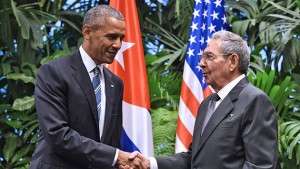

United States, Cuba Relations 2016
The Cuban revolution of 1959 was not just a political revolution. It was a social revolution. The 99% took over the resources of their own country and the 1% fled to Miami. In response United States began a blockade of Cuba in 1960. A memo written by a senior State Department official laid out American policy. It advocated “a line of action that makes the greatest inroads into denying money and supplies to Cuba, to decrease monetary and real wages, to bring about hunger, desperation and the overthrow of the Castro government. ”
Last year United States reestablished diplomatic relations with Cuba and last week Obama said in Havana that “I affirm that Cuba’s destiny will not be decided by the United States or any other nation. We talk about the US relations with Cuba and President Obama’s recent visit with Walter Lippman.
Guest – Walter Lippmann, editor of the Cuba News Yahoo News Group.
—-

8th Annual Brookyn Folk Festival
Co-hosts Michael Smith and Heidi Boghosian are joined by Eli Smith to talk about the upcoming Brooklyn Folk Festival. Eli is a banjo player, writer, researcher and promoter of folk music. He’s a Smithsonian Folkways recording artist and produces two folk festivals annually, the Brooklyn Folk Festival in the Spring and Washington Square Park Folk Festival in the Fall.
—————————————————————
CIA Sponsored Terror, Civil Liberties, Criminalizing Dissent, Human Rights, NSA Spying, Political Prisoner, Prison Industry, Surveillance, Targeting Muslims, War Resister
Podcast: Play in new window | Download
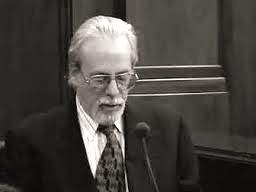
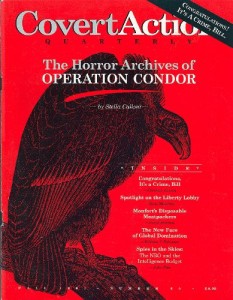
Law and Disorder hosts Heidi Boghosian and Michael Smith remember New York City Attorney and publisher Bill Schaap.
Bill Schaap died in his home on February 25th after a long illness. He was 75. After graduating from the University of Chicago Law school in 1964 Schaap worked for the Center for Constitutional Rights on its project in Japan representing antiwar GIs during the Vietnam war. For 20 years he and his companion the late Ellen Ray lived in Washington DC and published and wrote for the magazine “Covert Action Quarterly” which exposed the crimes of the CIA. In its early years they named CIA agents, until a naming names act was passed by Congress making the exposure of agents a crime. In the early 80s they moved to New York City and founded Sheridan Square Press. They published books about the CIA by former CIA agents. Most prominently they published New Orleans district attorney Jim Garrison’s book “On the Trail of the Assassins” showing CIA involvement in the Kennedy assassination. The book became a New York Times bestseller and was the basis for the Oliver Stone movie “JFK”. In the early 90s they founded the Institute For Media Analysis and began publishing the magazine “Lies of Our Times”, a magazine of media criticism. Bill Schaap was a recognized expert in government propaganda and wrote and spoke widely and frequently on the topic.
—-
Lawyers You’ll Like: Attorney Bill Schaap
Attorney William Schaap graduated from the University of Chicago Law School in 1964 and has been a practicing lawyer since. Bill specialized in military law and practiced in Asia and Europe. He later became the editor in chief of the Military Law Reporter in Washington for a number of years. In the 70’s and 80’s he was a staff counsel of the Center for Constitutional Rights in New York City. In the late 80s, he was an adjunct professor at John J. College of Criminal Justice of the City University of New York where he taught courses on propaganda and disinformation.
Attorney William Schaap:
- One of first cases at this big Wall Street firm, they had some outside counsel working on it, one of whom was David Lubel, and Dave Lubel who had I think been a recruiter for the Communist Party in his youth, was always good at spotting somebody who was always worth recruiting and he started to tell me there was this convention of this lawyers group.
- It was this 1967 Lawyers Guild Convention in New York. He dragged me to one event, I met Bill Kunstler, I met Arthur Kinoy, I met Victor Rabbinowitz. I’d been on Wall Street for a year or two, I said I didn’t know there were lawyers like this.
- I joined the same day and met Bernadine Dorhn and a few weeks she called me and said we need your help.
- She said you gotta defend a bunch of Columbia students. The next thing I knew the riot started at Columbia and she said you have to go down there and defend them.
- I signed up to be staff counsel on the National Lawyers Guild Military Law Project in Okinawa, Japan.
- When you work overseas in that kind of a climate with the military you learn a lot fast about American imperialism.
- Once you learn that, you learn about the CIA.
- That led us to originally working on Counter Spy magazine and then on Covert Action Magazine.
- The original purpose was to expose the CIA. We worked with Lou Wolf who is an expert in uncovering CIA agents in US embassies, not through any classified documents but because if you knew how to read the paperwork and State Department things, you could tell who are the “ringers.”
- We were so successful that Congress passed a law against us.
- Our goal was to make these people ineffective because the only way most CIA could work, particularly the ones that were assigned to an embassy was to have to pretend to be something else.
- They were all third assistant political secretaries and those were all phony things. Their job was to finagle their way into various community organizations in whatever foreign capital they were posted to recruit people to turn against their own countries and become traitors to their own countries, to become spies for the U.S.
- We thought if we identified these people, it might make their job a little bit harder, which it did.
- Of course, the problem with that is the government said we were trying to get them killed which we weren’t trying to do and nobody we did expose ever did get killed.
- He (Philip Agee) had been an adviser to Counter Spy. Counter Spy folded when Welch got killed, cause the pressure was too much and started Covert Action Quarterly.
- He was not the person discovering who the under cover people were, Lou Wolf was doing that.
- Phil wrote articles for us in every issue and we worked very closely with him.
- Once you start exposing these things, they really don’t have any defense.
- They tried to catch us in something phony. We would get tips that would turn out to be CIA trying to get us to print some story that wasn’t true so they could then discredit us.
- We had more interference from the government when we were doing military law work, before Covert Action Quarterly.
- They would plant bugs in our attic in Okinawa, things like that.
- The Intelligence Identity Protection Act has 2 parts. One makes it a crime for someone in the government who has classified information to reveal someone’s identity. The second part makes it a crime to reveal the identity of someone you did not learn from classified information or you position. (But if you were in the business of exposing these people . . .)
- Regarding his newsletter The Lies of Our Times – It was in the 90s, from 1990 to 1995 I think. To a certain extent, the abuses we were crying about got a little bit less over time because that’s sometimes the helpful result of that kind of exposure.
- We were just tired of people thinking that if it was in the New York Times it must be true.
- The fact is that those people lie all the time.
- I think we’ve gotten to a point where people recognize that the government lies to them and that there’s an awful lot that goes on that they don’t know.
Guest – Attorney William Schaap graduated from the University of Chicago Law School in 1964 and has been a practicing lawyer since. Bill specialized in military law and practiced in Asia and Europe. He later became the editor in chief of the Military Law Reporter in Washington for a number of years. In the 70’s and 80’s he was a staff counsel of the Center for Constitutional Rights in New York City. In the late 80s, he was an adjunct professor at John J. College of Criminal Justice of the City University of New York where he taught courses on propaganda and disinformation.
In addition to being a practicing lawyer, Bill was a journalist, publisher and a writer specializing in intelligence as it relates to media. He was the co-publisher of a magazine called the Covert Action Quarterly for more than 20 years. He also published a magazine on propaganda and disinformation titled Lies Of Our Times. Attorney Bill Schapp has written numerous articles and edited many books on the topic of media and intelligence.
—-

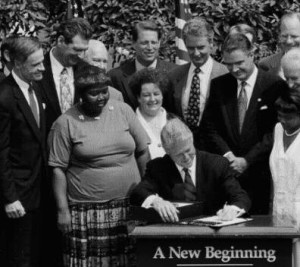
Clinton Administration Sets Back African-Americans
A recent article by our next guest documents the Clintons shared responsibility for the disastrous policies of mass incarceration and the subsequent war on drugs. A topic Hillary Clinton has been confonted with by Black Lives Matter activists while on the campaign trail. The recently published article in Republic Magazine is titled “The Clinton’s War On Drugs: When Black Lives Didn’t Matter” by Professor Donna Murch.
Guest – Donna Murch, Professor of History at Rutgers University and author of Living In The City: Migration, Eduation and the Rise of the Black Panther Party. She also contributed an article to the forthcoming verso press book “False Choice: The Faux Feminism of Hillary Clinton.
——————————————————-
CIA Sponsored Terror, Civil Liberties, Criminalizing Dissent, Habeas Corpus, Human Rights, Political Prisoner, Prison Industry, Surveillance, Targeting Muslims, Torture, Truth to Power, War Resister
Podcast: Play in new window | Download
Updates:
Co-hosts Heidi Boghosian And Katherine Franke Discuss Past Decisions By The Late Supreme Court Justice Antonin Scalia.
—-
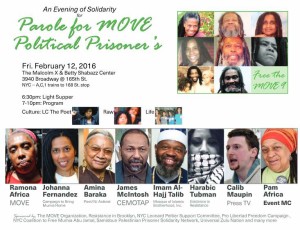
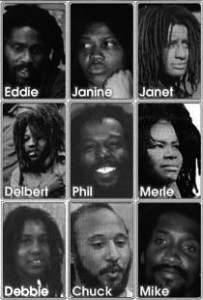
An Evening of Solidarity: PAROLE FOR THE MOVE 9
We hear select presentations from the many speakers and performances at the Parole For The Move 9 event. In the summer of 2015 supporters of The Move Organization initiated a petition for United States Attorney General Loretta Lynch . The goal of the petition is to push the United States Attorney General to investigate the wrongful and ongoing imprisonment of The Move 9 who have been imprisoned since August 8th 1978. Last May marked 30 years since the unconscionable bombing and murder of the MOVE family by the U.S. government. Live Stream of the MOVE9 event.
Speakers:
Johanna Fernandez, Campaign to Bring Mumia Home
Civil Rights Attorney Lynne Stewart
Amina Baraka, Poet/NJ Activist/Movement Leader
James McIntosh, CEMOTAP
Imam Al-Hajj Talib, Mosque of Islamic Brotherhood, Inc.
Harabic Tubman, Existence is Resistance
Calib Maupin, Press TV
Pam Africa, MOVE as Master of Ceremonies
Sponsored by: The MOVE Organization; Resistance in Brooklyn; NYC Leonard Peltier Support Committee; Pro Libertad Freedom Campaign; NYC Coalition to Free Mumia Abu-Jamal; Samidoun Palestinian Prisoner Solidarity Network; Universal Zulu Nation; and many more.
————————————————–



















